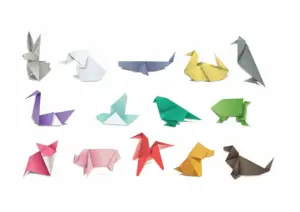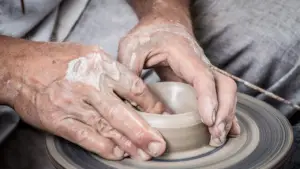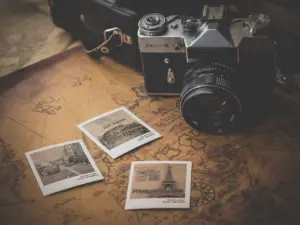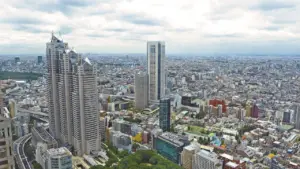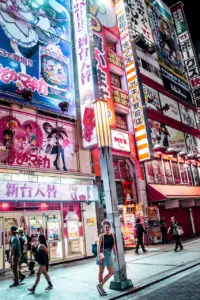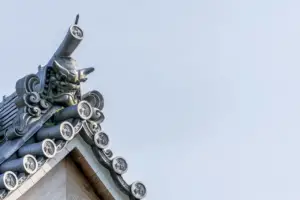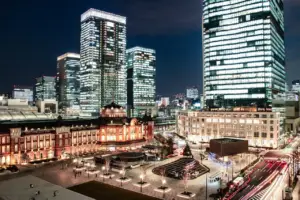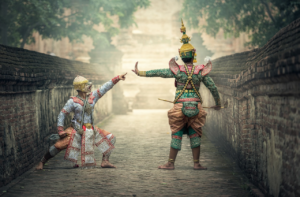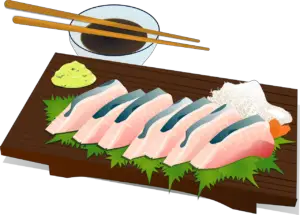Are you looking for a unique cultural experience that will leave you in awe? Look no further than Japan. This country is rich in history and tradition, offering visitors a chance to immerse themselves in a world unlike any other. From ancient temples to modern technology, Japan has something for everyone.
One of the best ways to experience Japan’s culture is by participating in traditional activities. Whether it’s attending a tea ceremony or watching a sumo wrestling match, these experiences will give you a glimpse into the heart of Japan.
So, pack your bags and get ready to embark on a journey of a lifetime as we explore seven unique cultural experiences to have in Japan.
Key Takeaways
- Japan offers a diverse array of traditional activities, such as tea ceremonies, visits to ancient temples and shrines, onsens, sumo wrestling, and kabuki theater performances.
- Authentic Japanese cuisine is a must-try, with popular dishes including sushi, ramen, tempura, yakitori, and okonomiyaki, each with their own unique taste and texture.
- Traditional arts and crafts, such as calligraphy and tea ceremony classes, offer a chance to learn new skills while immersing oneself in Japanese culture and heritage.
- Japanese souvenirs, such as fans and tea sets, make for thoughtful and unique gifts and serve as a reminder of one’s trip to Japan.
Attend a Traditional Tea Ceremony
You haven’t truly experienced Japan until you’ve attended a traditional tea ceremony – it’s an unforgettable cultural immersion! In Japan, tea ceremonies are an important part of their culture and have been practiced for centuries.
These ceremonies are not just about drinking tea, but also about experiencing a sense of tranquility, beauty, and harmony. During a tea ceremony, you will witness the meticulous preparation of the tea, which is not just about the taste but also the presentation.
The tea master will carefully whisk the tea, creating a frothy texture that is pleasing to the eye. You will also learn about the etiquette and symbolism that surrounds the ceremony, such as the importance of showing respect and gratitude.
So if you’re looking to experience a unique cultural experience in Japan, attending a traditional tea ceremony is a must-do activity that you won’t regret!
Explore the Ancient Temples and Shrines
Exploring Japan’s ancient temples and shrines allows you to immerse yourself in the country’s rich history and spirituality. Japan is home to some of the most beautiful temples and shrines in the world, and these structures have been around for centuries. Whether you’re interested in history, culture, or religion, there’s something for everyone to enjoy.
To make the most out of your temple and shrine experience in Japan, be sure to visit these top sites:
- The Fushimi Inari Shrine in Kyoto, which features thousands of bright orange torii gates
- The Sensoji Temple in Tokyo, one of the oldest and most significant temples in the city
- The Todaiji Temple in Nara, home to the world’s largest bronze Buddha statue
- The Itsukushima Shrine in Hiroshima, which appears to float on water during high tide
- The Meiji Shrine in Tokyo, which offers a peaceful escape from the hustle and bustle of the city
Exploring these ancient temples and shrines is a must-do cultural experience in Japan. You’ll be amazed at the intricate architecture, stunning views, and rich history that these sites have to offer. Don’t forget to bring your camera and immerse yourself in the beauty and spirituality of these incredible structures.
Take a Soak in a Hot Spring
Indulge in the ultimate relaxation by taking a dip in a hot spring while in Japan. Known as "onsen"in Japanese, these natural hot springs are found throughout the country and offer a unique cultural experience. Not only are they a great place to unwind and rejuvenate, but they also provide an opportunity to immerse yourself in Japanese customs and traditions.
When visiting an onsen, there are a few customs to keep in mind. First and foremost, it is customary to bathe naked, as swimsuits are not allowed. Before entering the hot spring, you must thoroughly wash your body and hair to ensure cleanliness. Additionally, tattoos are often not allowed in onsens, as they are associated with the yakuza, or Japanese mafia. But don’t let these customs deter you from experiencing the ultimate relaxation in a hot spring in Japan. Check out the table below for some must-visit onsens in various regions of the country.
| Region | Onsen Name | Features |
|---|---|---|
| Hokkaido | Noboribetsu Onsen | Known for its sulfuric waters and various baths, including a mud bath |
| Nagano | Shibu Onsen | A historic onsen town with nine public baths and traditional Japanese inns |
| Tokyo | Odaiba Oedo Onsen Monogatari | A modern onsen with various themed baths, including a sake bath |
| Kyoto | Kurama Onsen | A mountain retreat with outdoor baths and a view of the surrounding forest |
| Beppu | Beppu Onsen | Known for its variety of unique baths, including a sand bath and a mud bath |
Take a break from sightseeing and treat yourself to a dip in an onsen. It’s a unique and relaxing way to experience Japanese culture and customs while enjoying the therapeutic benefits of natural hot springs.
Watch a Sumo Wrestling Match
Watching a Sumo wrestling match is a thrilling and authentic way to immerse oneself in Japanese sports culture. Sumo wrestling is not just a sport, but also an important part of Japan’s cultural heritage. The ancient tradition of Sumo wrestling dates back to the Edo period and has been passed down through generations.
The matches are held in a circular ring called a dohyo, where two wrestlers, or rikishi, face off against each other. The aim of the game is to push the opponent out of the ring or make them touch the ground with any part of their body other than the soles of their feet.
If you’re planning to watch a Sumo wrestling match, there are a few things you should keep in mind. Firstly, the matches are held only a few times a year, so be sure to check the schedule beforehand. Secondly, it’s important to arrive early to secure a good seat as the matches are very popular and can get crowded quickly. Lastly, be prepared for the intense atmosphere and energy that comes with the matches.
The wrestlers are highly respected and considered national heroes, which is reflected in the passion of the spectators. Overall, watching a Sumo wrestling match is an unforgettable experience that will leave you with a deeper appreciation of Japan’s unique culture.
Attend a Traditional Kabuki Theater Performance
Get ready to be transported back in time as you immerse yourself in the colorful and dramatic world of Kabuki theater performance. This traditional art form has been a part of Japanese culture for over 400 years and continues to captivate audiences to this day.
From the elaborate costumes and makeup to the intricate stage design and music, every aspect of Kabuki theater is carefully crafted to create a mesmerizing experience.
Attending a Kabuki theater performance is like stepping into a different era. The actors’ exaggerated gestures and movements, accompanied by a chorus of musicians, create a unique and unforgettable atmosphere.
Even if you don’t understand Japanese, the beauty and artistry of the performance will leave you spellbound. So, if you want to experience a truly authentic cultural experience in Japan, make sure to add a Kabuki theater performance to your bucket list.
Try Authentic Japanese Cuisine
You can truly savor the flavors of Japan by trying authentic Japanese cuisine. From sushi and ramen to tempura and yakitori, Japanese cuisine offers a wide variety of dishes that will tantalize your taste buds. Japan has a rich culinary culture that has been influenced by various factors such as geography, religion, and history.
To help you get started, here’s a table that showcases some popular Japanese dishes and their main ingredients:
| Dish | Main Ingredients |
|---|---|
| Sushi | Vinegared rice, raw fish, vegetables, and sometimes egg |
| Ramen | Noodles, broth, and toppings such as pork, egg, and vegetables |
| Tempura | Seafood or vegetables coated in batter and deep fried |
| Yakitori | Grilled skewered chicken or other meats |
| Okonomiyaki | Savory pancake made with flour, eggs, cabbage, and other toppings |
Each dish has its own unique taste and texture. Sushi, for example, is a delicacy that requires a certain level of skill to prepare. Meanwhile, ramen is a hearty noodle soup that is perfect for a cold day. Tempura is a crispy and flavorful dish that is best enjoyed with a dipping sauce. Yakitori, on the other hand, is a popular street food that is loved for its simplicity and deliciousness. Finally, Okonomiyaki is a savory pancake that is often compared to a pizza due to its varied toppings.
Trying authentic Japanese cuisine is a must-do experience when visiting Japan. Whether you’re a foodie or just someone who enjoys a good meal, Japanese cuisine has something for everyone. So, don’t be afraid to explore the unique flavors and dishes that Japan has to offer!
Participate in a Traditional Japanese Craft Workshop
If you’re looking for a unique and immersive cultural experience in Japan, consider participating in a traditional Japanese craft workshop.
Not only will you learn a new skill, but you’ll also have the opportunity to experience firsthand the intricacies and beauty of Japanese traditional arts and crafts.
And the best part? You get to take home a one-of-a-kind souvenir that you made yourself!
Learn a New Skill
Want to learn a new skill while immersing yourself in Japanese culture? Check out traditional arts like calligraphy or tea ceremony classes! Japan has a rich cultural heritage that includes various forms of art and crafts. By learning a new skill, you can gain a deeper appreciation of Japanese traditions and culture.
One popular option is calligraphy, also known as shodo. This art form involves using a brush and ink to write kanji characters on paper or silk. Calligraphy has been practiced in Japan for centuries and is considered a form of meditation. Taking a calligraphy class can help you improve your focus and concentration while learning a new skill.
Another option is tea ceremony or chado, which is a ritualistic way of preparing and serving Japanese green tea. The ceremony includes various steps and gestures that have symbolic meanings. Participating in a tea ceremony can teach you about Japanese hospitality and aesthetics.
Experience Japanese Traditional Arts and Crafts
Immerse yourself in Japanese heritage and discover the beauty of traditional arts and crafts. You can experience calligraphy, or shodo, which involves using a brush and ink to create beautiful characters on paper. It’s a great way to learn about Japanese language and culture. You can take classes with a professional calligrapher to learn the techniques and create your own unique pieces.
Another popular traditional art form is the tea ceremony, or chanoyu. It’s a ritual that involves the preparation and serving of green tea. It’s a practice that has been passed down for generations and has become an important part of Japanese culture. You can attend a tea ceremony class to learn about the history and significance of the practice, as well as the proper etiquette and techniques for preparing and serving tea. It’s a peaceful and meditative experience that will leave you with a deeper appreciation for Japanese culture.
Take Home a Unique Souvenir
Now that you’ve experienced the beauty of Japanese traditional arts and crafts, it’s time to bring a piece of Japan back home with you.
Japan is known for its unique and thoughtful souvenirs, from small trinkets to elaborate handcrafted items. These souvenirs not only serve as a reminder of your trip, but they also make for great conversation starters and unique gifts for loved ones.
One popular souvenir to bring home is a Japanese fan, or ‘sensu’ in Japanese. These fans come in various designs and sizes, and are often used as decorative pieces or to cool off during the hot summer months.
Another popular souvenir is a traditional Japanese tea set, complete with a teapot and matching cups. These tea sets are not only beautiful, but they also allow you to bring a piece of Japanese tea culture back home with you.
So, don’t forget to take some time to browse the local shops and markets for the perfect souvenir to bring home.
Frequently Asked Questions
What is the significance of the tea ceremony in Japanese culture?
The tea ceremony, or chanoyu, is a highly significant tradition in Japanese culture. It’s a ceremonial way of preparing and serving green tea that has been practiced for centuries.
The ceremony emphasizes the principles of harmony, respect, purity, and tranquility. It’s performed with great precision and attention to detail. The tea is prepared using special utensils, and the host carefully follows a set of rituals and procedures.
The ceremony is a way of bringing people together and promoting a sense of community. It’s often used to welcome guests or celebrate special occasions. Participating in a tea ceremony is a unique and immersive experience that offers a glimpse into the rich cultural heritage of Japan.
How old are the ancient temples and shrines that can be explored in Japan?
If you’re interested in exploring ancient temples and shrines in Japan, then you’re in for a treat! These historical sites are truly breathtaking and offer a glimpse into Japan’s rich cultural heritage.
Some of the oldest shrines in Japan date back to the 8th century, while others have been reconstructed over time due to natural disasters or war. One example is the famous Todaiji Temple in Nara, which was founded in 728 AD and rebuilt in the 17th century.
Another must-see is the Fushimi Inari Shrine in Kyoto, which dates back to the 8th century and features thousands of torii gates leading up to the mountain.
No matter which ancient temple or shrine you decide to visit, you’ll be transported to a different time and place, and gain a deeper appreciation for Japan’s fascinating history.
What are the health benefits of soaking in a hot spring?
Soaking in a hot spring, also known as onsen, has numerous health benefits. The mineral-rich waters are said to improve blood circulation, ease muscle pain, and reduce stress levels. The high temperatures also promote sweating, which helps eliminate toxins from the body.
Additionally, the minerals in the water have been known to aid in skin conditions such as eczema and psoriasis. In Japan, hot springs are a popular way to relax and unwind, and many ryokans (traditional Japanese inns) have their own private onsen for guests to use.
So, if you’re looking for a unique and rejuvenating experience during your travels, be sure to add a visit to a hot spring to your itinerary.
How long does a typical sumo wrestling match last?
When it comes to sumo wrestling in Japan, a typical match can last anywhere from a few seconds to several minutes. The actual length is determined by the actions of the wrestlers.
If one wrestler is able to knock his opponent out of the ring or force them to touch the ground with any part of their body other than the soles of their feet, the match is over. However, if the wrestlers remain in a stalemate position for a prolonged period, the match will be paused and restarted.
Overall, sumo wrestling is an exciting and unique cultural experience to witness in Japan, with each match offering its own unpredictable outcomes and thrilling moments.
What types of traditional Japanese crafts are typically taught in a workshop?
If you’re interested in learning about traditional Japanese crafts, you’ll find plenty of workshops and classes available throughout the country.
Some of the most popular crafts include ikebana (flower arrangement), calligraphy, tea ceremony, and origami.
In these workshops, you’ll learn the basics of each craft and get hands-on experience creating your own pieces.
You may also have the opportunity to learn from a master craftsman and gain a deeper understanding of the history and cultural significance of each craft.
Whether you’re a beginner or an experienced artist, taking a traditional Japanese craft workshop is a great way to immerse yourself in the country’s rich cultural heritage.
Conclusion
So, you’re planning a trip to Japan and you want to make the most of your cultural experience? Well, you’re in luck! Japan has so much to offer in terms of unique cultural experiences, from traditional tea ceremonies to soaking in hot springs and watching sumo wrestling matches.
If you’re looking for a truly authentic experience, why not attend a traditional tea ceremony? This ancient art form is steeped in tradition and ritual, and it’s a great way to immerse yourself in Japanese culture.
Or, if you’re more of a history buff, why not explore the ancient temples and shrines that can be found throughout Japan? These beautiful structures are not only stunning to look at, but they also offer a fascinating glimpse into Japan’s rich cultural heritage.
For a truly relaxing experience, why not take a soak in a hot spring? Known as onsens, these natural hot springs are a popular pastime in Japan and they’re said to have healing properties.
For a more active experience, why not watch a sumo wrestling match? This traditional sport has been a part of Japanese culture for centuries and it’s a great way to experience the country’s unique traditions.
If you’re interested in the performing arts, why not attend a traditional Kabuki theater performance? This ancient art form is a combination of dance, drama, and music, and it’s sure to take your breath away.
And of course, no trip to Japan would be complete without trying some authentic Japanese cuisine. From sushi and ramen to tempura and udon, there’s something for everyone.
Last but not least, why not participate in a traditional Japanese craft workshop? From calligraphy to pottery, there are plenty of workshops available where you can learn about traditional Japanese crafts and create your own unique souvenirs.
So, whether you’re a history buff, a foodie, or just looking for a unique cultural experience, Japan has something for everyone.











